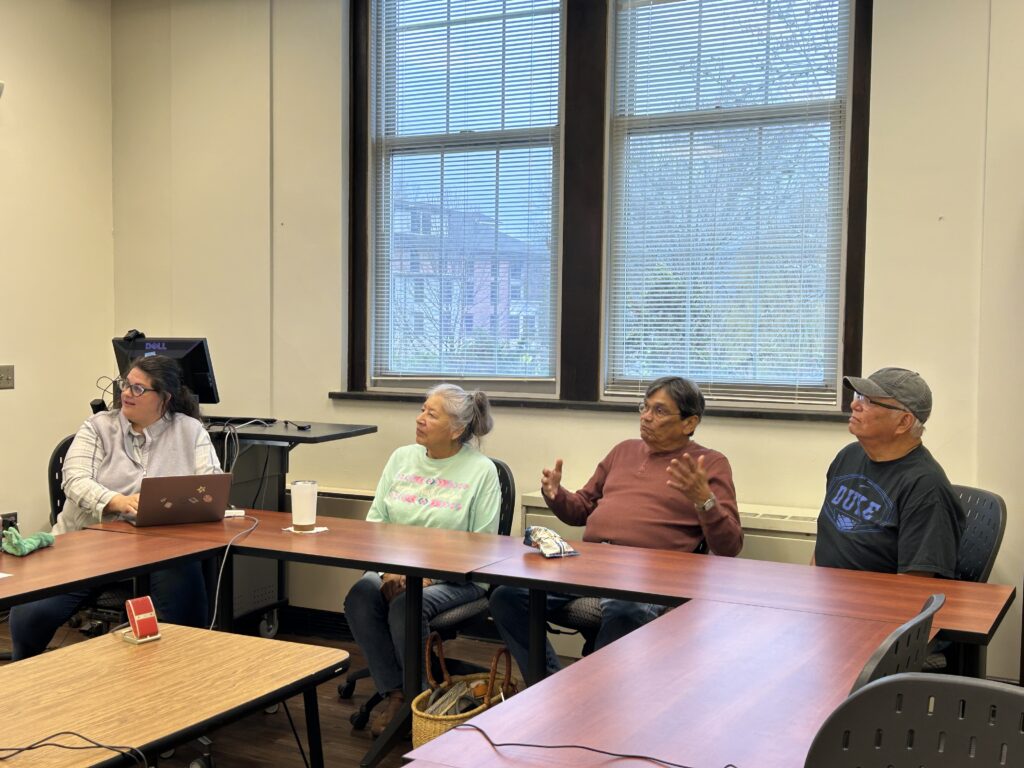Eastern Cherokee Histories in Translation is uncovering personal accounts of Cherokee history by translating original Eastern Cherokee documents into English.
“This work can have this real impact on community histories and knowledges,” said project director and editor Sara Snyder Hopkins.
The ECHT website describes the project as sharing unique texts that have not been previously translated.
“The long-term goals of ECHT is to bring these texts into dialogue with other written and oral histories through critical annotation and contextualization apparatuses and make these materials accessible to future tribal members and historians of the EBCI, Appalachia and the American Southeast,” is said on the website.
The ECHT translation and research team includes Hopkins, several professors and first language Cherokee speakers.

The team is translating handwritten documents primarily from EBCI members in the mid-nineteenth and early twentieth centuries. ECHT is currently focusing on the Inoli Letters and personal diary journals of Will West Long.
The Inoli Letters, 40 years of journal entries by Inoli, have a personal connection to the ECHT team with Wiggins Blackfox. Blackfox was a first language speaker and a founding member of ECHT until his recent death.
“That was his great-great-grandfather,” Hopkins said. “We have this direct family line and Wiggins was working with us to translate those letters.”
During the 1880s, the Inoli Letters were collected by James Mooney and Will West Long.
ECHT currently has nearly 1200 pages of Will West Long’s diary, spanning over several decades. However, within those pages, many years are missing. Hopkins thinks that these entries have been either destroyed or taken by collectors.
Long journaled daily, which is now allowing these modern-day translators to explore his day-to-day life.
“The entries can be really quotidian,” Hopkins said. “We joke that one summer all they did was cut corn. I mean every single entry was about corn.”
Corn is a highly important food in the Cherokee culture, adding a layer of meaning and historical context to a seemingly random series of entries.
Character by character, word by word and line by line, the translation team is working through entries like this one. They have to be careful when translating though. The Cherokee syllabary in the documents is handwritten, which adds a layer of complexity understanding the characters and words.
“Trying to translate these documents is really difficult. They don’t use punctuation,” Hopkins said. “You don’t know where a sentence should start and end. It is quite a challenge.”
The language itself also embraces a fluid word order that expands what one word can mean based on how it is used.
“Our language is so rich and diverse,” Tom Belt, a first language speaker and ECHT translator, said. “One verb can be conjugated in 20,000 ways.”
“I describe it as you have these Cherokee word clouds,” Hopkins said. “You have to see this cloud and make meaning out of it in English.”
Using historical context to piece together meanings has helped the team figure out many of the translations. Hopkins said that Stuart Marshall, visiting assistant professor of history at The University of the South and ECHT co-investigator, has been able to provide this historical context for the project.
The challenge of translating has proven to be rewarding in surprising ways. In Long’s diary entries, he details the specifics of his personal life with details such as who he married and when.
The ECHT team shared this information with Long’s granddaughter, who is still alive and a first language speaker. She has been able to piece together family history, including important corrections to genealogical background, with the diary entries.
Listen to Hopkins talk about this discovery here.
ECHT has received significant grants from the National Endowment for the Humanities and the John W. Heisse Fund for Historic Preservation. This funding has allowed the project to expand and have the success it has found so far.
Related story: Cherokee Language Program expands with grant



